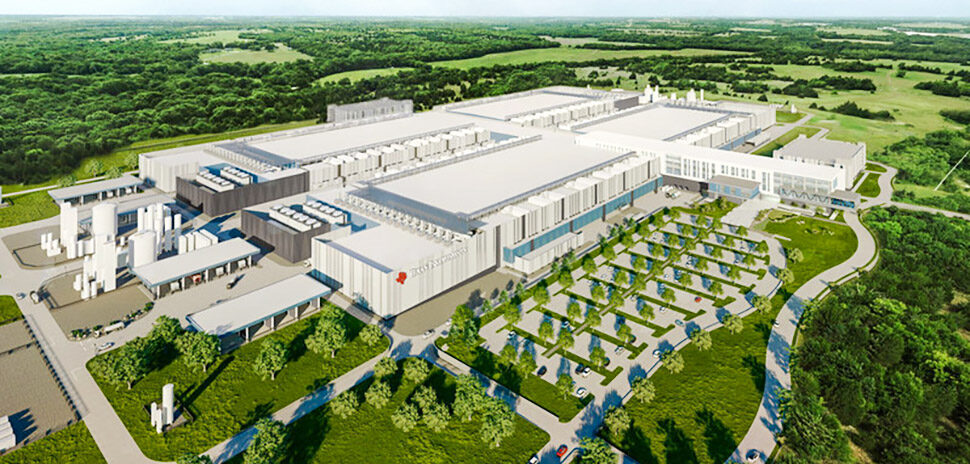SITE SELECTION EXPERTS CRUNCH THE NUMBERS SEARCHING FOR THE PERFECT LOCATION
Companies across North Texas are using cutting-edge data wizardry to peer into the future as part of the site selection process for their operations. And few are better at it than The Container Store. Experts say the 38-year-old Coppell retailer is a leader in employing what’s known as “predictive analytics” to tease out optimal locations for its stores, which sell high-end storage and organization products such as shoe racks, canisters, and baskets.
With number-crunching and visualization help from South Carolina-based eSite Analytics, The Container Store brass know how much income residents in a given neighborhood have, but also how long customers may sit in traffic when they’re likely to visit a prospective store. Valerie Richardson, the chain’s vice president of real estate, can factor in information that correlates with The Container Store (NYSE: TCS) customers, such as how many people in a geographic area give to charity or enjoy drinking wine.
“Depending on the size of the investment, one bad store could cost you five good stores,” she said. “If you make the wrong decision, you live with the costs for five to 15 years. An unsuccessful store is a huge contingency on the balance sheet.”
“If you make the wrong decision, you live with the costs for five to 15 years.”
Valerie Richardson
Data crunching ahead of time can tell Richardson when it’s best to avoid pulling the trigger on a prospective site.
Given the lay of the land in a certain trade area, it may make sense to have an online strategy versus an off-line strategy, said Charles Wetzel, the Dallas-based president of eSite.
“There may not be real estate available,” he said.
Across the spectrum of commercial real estate, predictive analytics is no longer a “nice to have” when picking locations, according to Joseph Cahoon, director of the Folsom Institute for Real Estate at Southern Methodist University’s Cox School of Business. Companies that fail to use the predictive analytics risk being left behind.
“In corporate relocations, firms are using it not just to choose Dallas-Fort Worth, but also specific places in North Texas,” Cahoon said. “Whether it’s for large users of space, like State Farm or Liberty Mutual, or for smaller operations like coworking, predictive analytics is helping companies make better-informed decisions when choosing locations.”
HOW LOCATION INTELLIGENCE IS USED IN SITE SELECTION
The notion of using data to inform site selection is hardly new. The 1960s saw the genesis of a pursuit called geographic information systems, or GIS, meaning using computers to create maps out of geographic information. But it has only been within the last five to 10 years that a division of geography surfaced to apply geographic ideas for business decision-making. That division is called location intelligence.
A branch of location intelligence, dubbed business geography, helps organizations of any stripe — for-profit, nonprofit, or governmental — make wise choices about the locations and markets where they operate.
“A convergence of technologies have allowed this to happen,” said Murray Rice, an associate professor of geography and environment at the University of North Texas in Denton.
In addition to census data, which has been available online since the 1990s, companies can now access information from consumers’ credit card transactions.
“Now, it’s not just many people have a high school education in a neighborhood,” Rice said. “It’s how much do households spend on flowers in a given year in that neighborhood.”
“Now, it’s not just many people have a high school education in a neighborhood. It’s how much do households spend on flowers in a given year in that neighborhood.” Murray Rice
Beyond credit card purchases, companies can get information from LinkedIn showing what jobs and skills are in demand within a geographic area. Google provides geographic information for mapping. From social media, marketers can harvest consumer opinions on, say, the best restaurants on a given street. Telecommunications companies have information on how often consumers visit stores in a neighborhood.
“What’s happened is it has all become more accessible through the internet,” said Amit Basu, whose titles at SMU’s Cox School include chair of the Information Technology and Operations Management department. Also, cloud computing allows companies big and small to rapidly and affordably access powerful software and hardware for crunching information, as well as storage to keep it safe.
And, as the “Internet of Things” becomes more widespread, even more data will become available as more inanimate objects get connected to cyberspace.
“All of this is reducing the cycle of management decision-making,” Basu said. “What once took months can now be done in days or hours.”
HOW TWO GAME CHANGERS HAVE EMERGED IN REAL ESTATE
In real estate, two game changers have emerged, says Evan Stair, a Dallas-based director of GIS at CBRE. One is the ability of modern systems to handle large numbers of variables simultaneously. The other is that technology can create images out of the data that non-technical people can use to make better decisions.
CBRE recently acquired Chicago’s Forum Analytics, which provides sophisticated modeling and mapping to help companies with finding the best locations for various operations.
“We’re rolling this out to all our clients,” Stair said of Forum’s services. “It’s more a value-add. In real estate, we don’t make a product. The thing we deal with is information.”
It’s not just the big players in commercial real estate that offer cutting-edge predictive help for their customers.
In Dallas, for example, Site Selection Group produces forecasts that show clients, say, how much they can improve their software development staff by increasing wages $5 an hour. Separately, Site Selection has built software to help track receivables on economic incentives, both for companies that receive them and the agencies that provide incentives, company CEO King R. White says.
“People don’t care about the past. They want to know about the future.”
King R. White
On top of all that, Site Selection’s staff can produce 20-year forecasts of future supply and demand of labor for specific occupations in particular markets.
“This is what the market has been asking for,” White said. “People don’t care about the past. They want to know about the future.”
Although number crunching and data wizardry can take much of the guess work out of site selection, it’s always important to remember an old computer science adage: Garbage in, garbage out.
“You can never take out the art involved in it,” Stair said. “Some people think it can be as sound as physics, with no room for error. But there is always the human element.”
A version of this article appeared in the Dallas-Fort Worth Real Estate Review.
For a daily dose of what’s new and next in Dallas-Fort Worth innovation, subscribe to our Dallas Innovates e-newsletter.
































